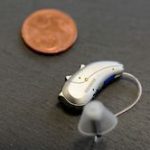
Popular disease back pain – the ISG syndrome
Back pain is a widespread disease that most Germans experience at least once a year. One eighth of all Germans suffers from severe back pain and is thus significantly limited in quality of life and performance. Although there is also psychosomatic back pain, most back pain has a physical cause and is treated accordingly after diagnosis.
About one quarter of one percent of all patients with low back pain suffer from pain in the sciatic joint area. As a transition point between the massive upper body and the comparatively lightweight legs, the sciatic joint is very sensitive.
The sciatic joint
If the sciatic joint, which is also called the liosacral joint, is affected, it is the ISG syndrome, the sciatic joint syndrome. The physician speaks here also of disturbances in the area of the sacral bone. The sciatic joint connects the spine to the pelvis via several ligaments and also serves as a shock absorber because it can cushion a massive force from the upper torso to the legs.
In this case, the fused structure of the sacrum meets the scoop-shaped ilium on both sides. Women are supported by the sciatic joint during childbirth, because it can expand considerably during delivery.
The symptoms of the disease
In ISG syndrome, the joint surfaces are awkwardly wedged into each other and the ligaments connecting the spine to the pelvis are displaced. The affected person feels a dull low back pain, which can manifest itself as attacks. Since people have two sciatic joints and usually only one of the two joints is affected, the pain occurs unilaterally.
The affected person may have the feeling that one leg is shorter than the other. Bending over is also difficult and is only possible to a limited extent, if at all. Symptoms can be similar to those of lumbago or stretched ligaments. The specialist makes the distinction after taking a medical history. If the doctor is unsure about the diagnosis, he can also order an MRI examination.
The causes of ISG syndrome
The ISG syndrome can occur suddenly due to a massive force on the legs or in the case of age-related signs of wear and tear take a continuous course. In the case of a massive application of force, accidents, lifting, continuous heavy lifting activities, a kick into the void as well as jerky stopping movements are typical causes for the syndrome.
Other risk factors are overweight, although basic malalignments have a more serious effect, stress and excessive sitting. Due to the increase in sedentary work due to digitalization, the disease is becoming more and more prevalent. Basically, athletic fitness that strengthens the lumbar and pelvic areas protect against ISG syndrome.
The resulting muscle formation makes the sciatic joint more resistant to the effects of force. Pregnancy can also lead to ISG syndrome. Here the hormonal change is responsible, by which the ligaments can loosen altogether. After pregnancy, however, the problem should have resolved itself.
ISG syndrome – The treatment
Since the ISG syndrome is a disease with a high number of affected persons, the therapies against the syndrome are well researched. Usually, the orthopedist is the specialist for this condition, as it is a malposition of the musculoskeletal system. The orthopedist can now prescribe physiotherapy, through which the joints can be set again by a skillful pressure.
There are a variety of physical exercises against the ISG syndrome, which can be completed in physiotherapy, but also independently. Another therapy is to wear a back orthosis. This is a thick band of tension belts, which is strapped around the pelvis and joint in accordance with the severity of the disease.
The orthosis relieves the pain, because the pain receptors are less irritated. Also stabilize the ligaments again. It supports the straightening of the ligaments. In many cases, acupuncture works wonders to remove the blockage. In more severe cases, surgery may also be considered to bring the twisted ligaments back into the correct position.





